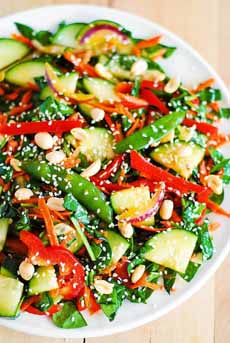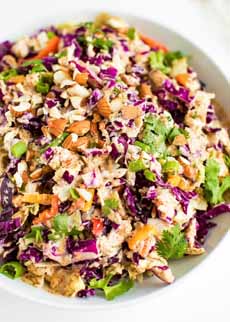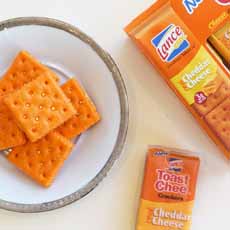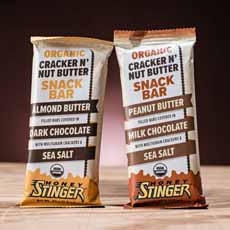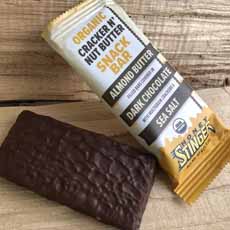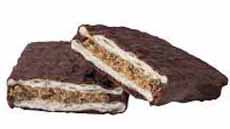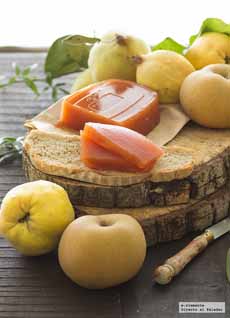|
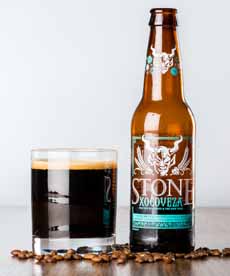
[1] Xocoveza, a coffee stout from Stone Brewing, has been described as “a liquid Christmas cookie” (photo courtesy Gear Patrol).

[2] Amaro Obsidian Coffee Stout from Deschutes Brewery.

[3] Breakfast Stout from Founders Brewing is a milk stout with coffee, although adding it to a bowl of cereal is a personal choice.

[4] The simplest nibble with a glass of stout: salted nuts (photo courtesy McCormick).

[5] Treat yourself to a coffee stout float. The recipe, from Eat Wisconsin Cheese, is below.
|
|
November 5th is World Stout Say. Stout is the darkest and heartiest of beers (porter is in second place).
And if you like coffee too, we have a recipe for dessert: a coffee stout float.
There are several categories of stout, a beer that has natural coffee and chocolate flavors from the types of malt used.
Chocolate Stout is a sub-category that uses different malts for an even more pronounced chocolate flavor. These days, some brewers add actual chocolate into the brew, or brew over cacao beans, or both.
Coffee Stout uses dark roasted malts to add a bitter coffee flavor. With the tandem growth of interest in microbrews and fine coffee, craft brewers have added specific ground beans to create, for example, “Breakfast Coffee Stout (photo #3),” “Espresso Stout” and “Guatemalan Coffee Stout.”
Cream Stout, Milk Stout or Sweet Stout is a style made sweeter with unfermentable lactose (milk sugar). The majority of stouts made are this style.
Dry Stout or Irish Stout is very dark and toasty or coffee-note style, exemplified by the world-famous Guinness.
Imperial Stout or Russian Stout or Russian Imperial Stout has more of a rich, roasted quality and a higher level of alcohol. These are potent beers that can be almost as thickly textured as liqueur. Examples include Samuel Smith’s Imperial Stout at 7% alcohol and Brooklyn Brewery’s Black Chocolate Stout (a Russian Imperial), at 8.7% alcohol. The alcohol content of imperial stouts can go up to 9% and 10%.
Irish Dry Stout uses unmalted roasted barley and bittering hops (rather than those that emphasize flavor or aroma), with a small amount of sour malt to add character.
Oatmeal Stout adds oatmeal to the mash, which gives a smoothness and creaminess to the stout. It has more restrained flavors and less alcohol than Imperial stout. Samuel Smith makes a benchmark oatmeal stout, with notes of fruit, licorice, chocolate and toffee.
Other variations can be developed by a particular brewer. Caraway stout, for example, includes caraway seeds in the mash.
It’s hard to pick one style from the list, so allow us to suggest a coffee stout. With the ascendancy of coffee as a craft drink in the U.S., combining it with stout is a natural.
Beyond stout, coffee can be added to every style of beer. Here’s a list of the 18 “best” coffee beers from Gear Patrol, and 27 coffee beer recommentations from Thrillist.
A BRIEF HISTORY OF STOUT
Stout is top fermented, which makes it an ale. Both stout and porter, its historic predecessor, are differentiated from conventional ale by their brown-black color, fuller body and stronger flavors.
Stout originated in Ireland, where traditional stouts are very rich, yet sharp and slightly bitter. It followed the creation of porter, a strong, dark ale, higher in alcohol, that originated in London in the early 1720s.
Large amounts of porter were subsequently exported to Ireland. By 1776, Arthur Guinness was brewing it at his St. James’s Gate Brewery in Dublin. Guinness Stout appeared by 1820.
In the 19th century, porter evolved, creating the new category of stout, meaning strong. It was first called stout porter (stronger porter); later, the porter reference was dropped.
Stout had a black color through the use of black patent malt and more roasted malts. It had a stronger in flavor than port. The alcohol level edged up, too.
This is achieved by brewing with barley that has been dark-roasted to the point of charring (think of espresso beans, compared to a medium-roast coffee). It is thus both darker and maltier than porter, has a more pronounced hop aroma, and may reach an alcoholic content of 6% to 7%.
While stout declined in popularity in the latter half of the 20th century, it has been resurrected by artisan brewers. A craft beer retailer should have a good selection.
STOUT FOOD PAIRINGS
Stout pairs well with strong, spicy and salty flavors:
Barbecued, grilled, roasted and smoked foods
Chocolate, including candy, cake, ice cream (photo #4), mousse and pudding
Desserts, especially fruity desserts (pies, tarts) and spicy ones like gingerbread/gingerbread brownies (recipe)
International cuisines: Indian, Middle Eastern, Szechuan
Rich braises and stews
Salty foods, like chips, nuts, pretzels and Roquefort cheese
Shellfish*: crab, oysters on the half shell, and other shellfish
Strong cheeses
Spicy sausages such as Andouille
|










